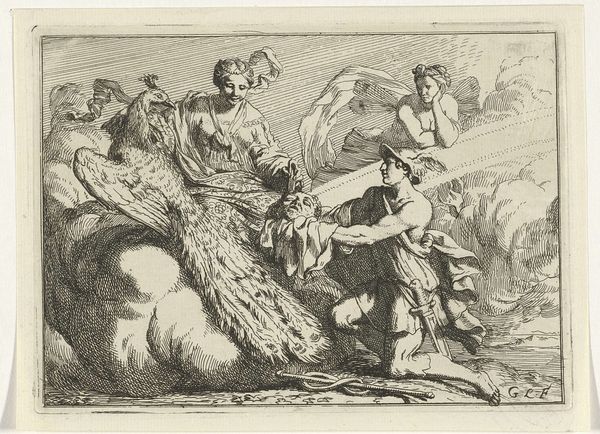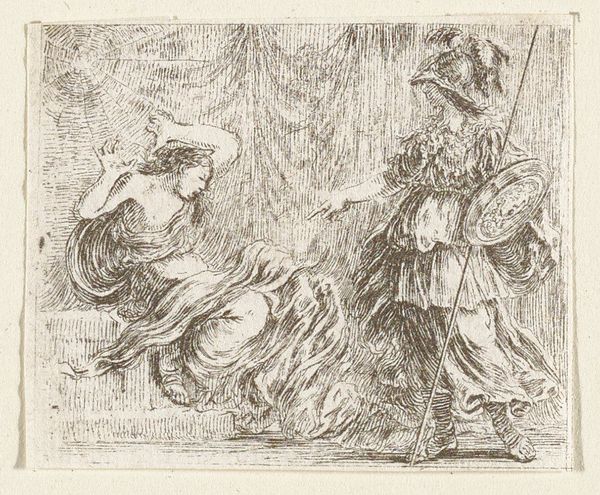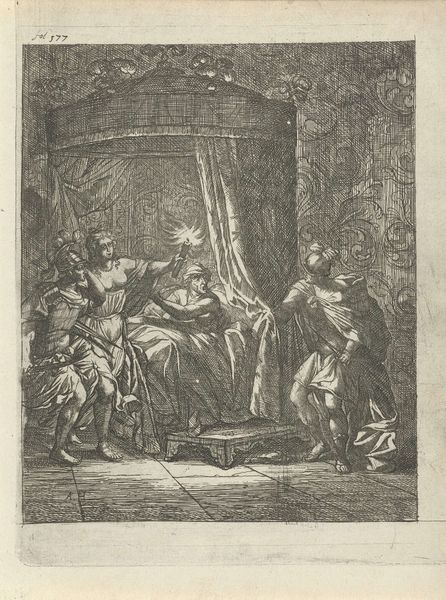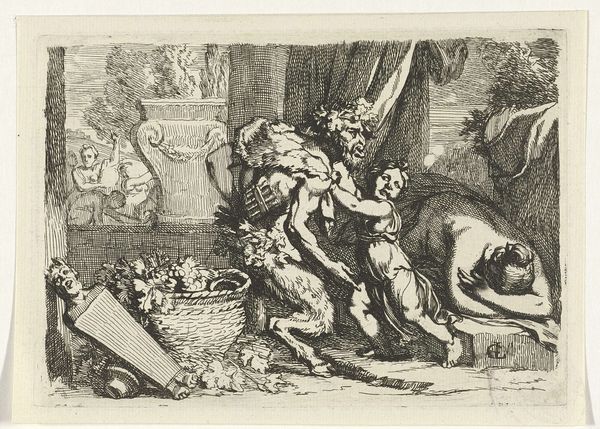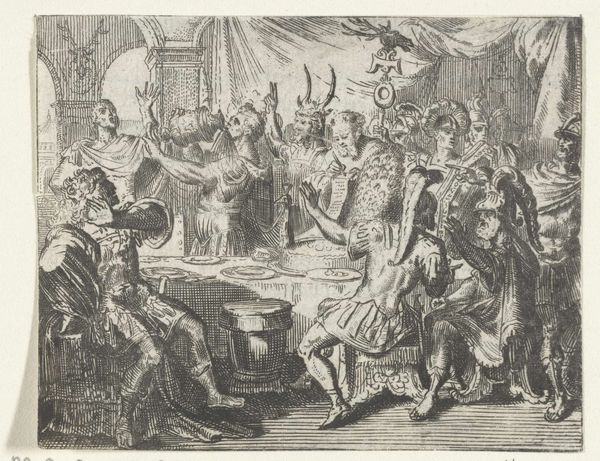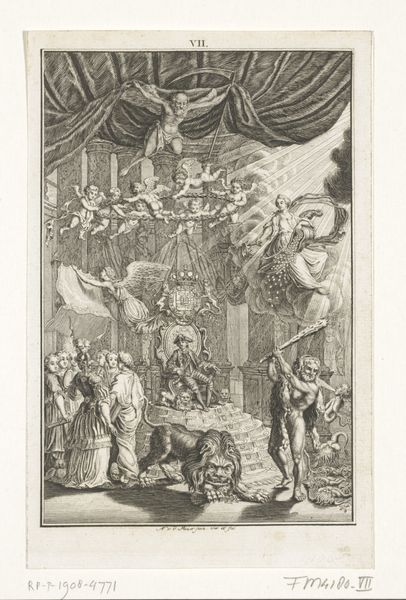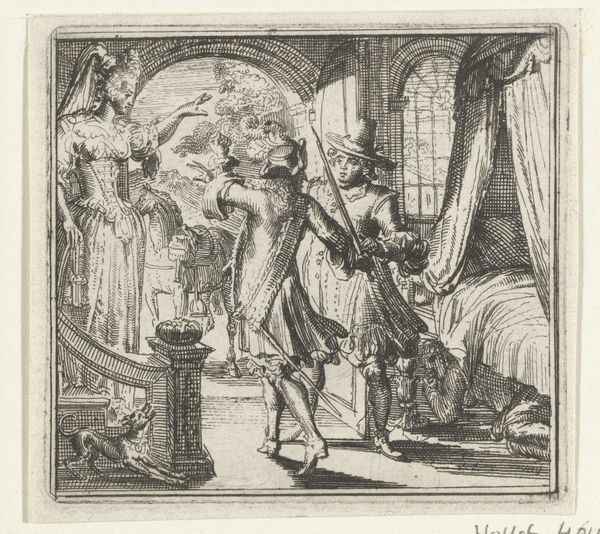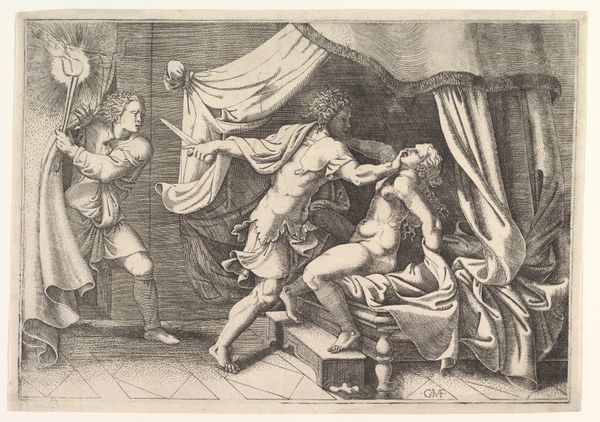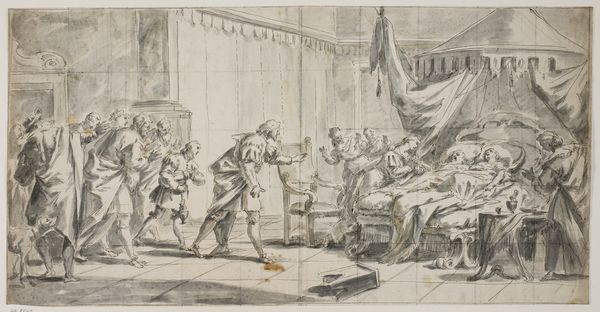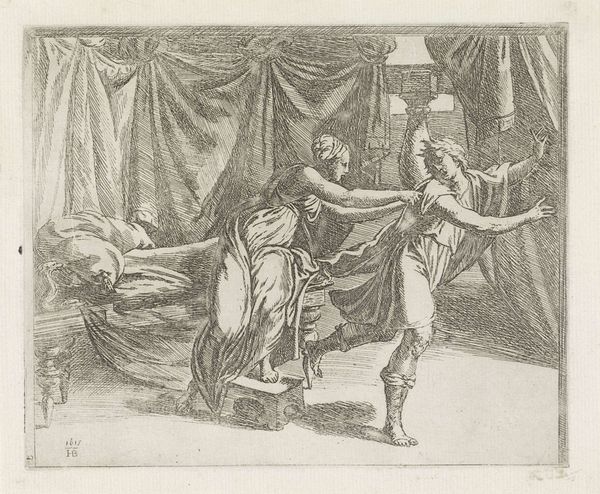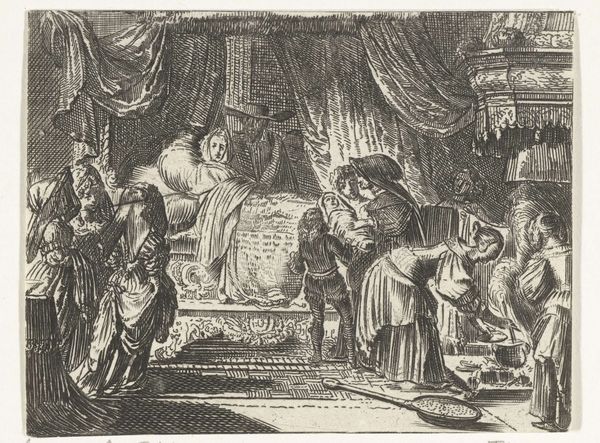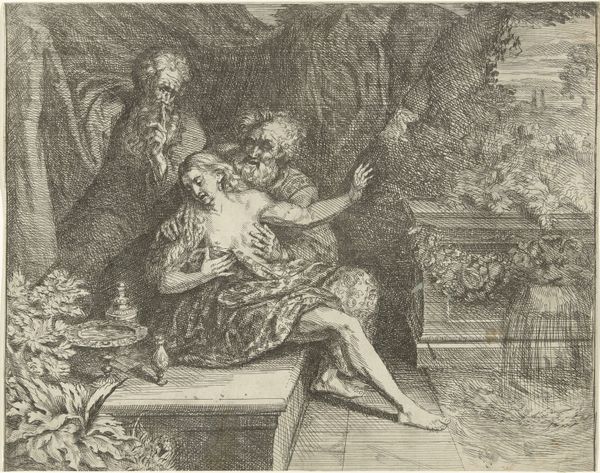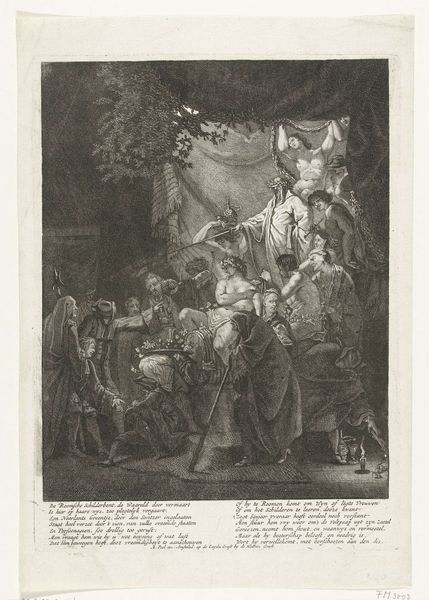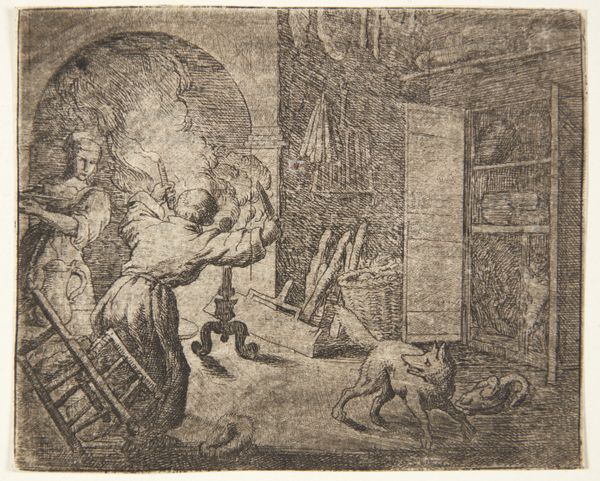
drawing, engraving
#
drawing
#
narrative-art
#
baroque
#
pencil sketch
#
figuration
#
pencil drawing
#
line
#
history-painting
#
engraving
Dimensions: height 120 mm, width 137 mm
Copyright: Rijks Museum: Open Domain
Editor: Here we have Anthony de Vos's "Clytaemnestra doodt Agamemnon," an engraving made sometime between 1675 and 1729. It depicts, as the title suggests, Clytaemnestra murdering Agamemnon. There’s a real sense of claustrophobia in this drawing; the figures are cramped and overwhelmed by the dense hatching. How do you interpret this work? Curator: This image screams Baroque, but beyond the stylistic flair, consider the narrative. De Vos offers a glimpse into a deeply fraught power dynamic. Clytaemnestra, typically cast as the villain, is here taking decisive action. What power structures does she defy through this act? Editor: I suppose she's defying patriarchal structures. Agamemnon sacrificed their daughter, Iphigenia, so his actions led to this. The artist could be suggesting a feminist reading of the classic myth? Curator: Exactly! We often frame such narratives through a male lens, excusing Agamemnon’s actions for the sake of war and ambition. De Vos dares to centre Clytaemnestra's rage, fueled by grief and injustice. Doesn't it make you question who the *real* monster is in this story? Is it her reaction, or his actions that caused that reaction? Editor: That's a radical thought! It challenges the traditional interpretation and almost validates her act as a form of justified rebellion against male authority. Curator: Precisely. This piece is not just a historical depiction; it's a loaded commentary on gender, power, and revenge, then and perhaps even now. Art serves as a potent tool to re-evaluate our cultural inheritance, and de Vos certainly initiates that discussion. Editor: I’m definitely going to look at this myth with new eyes. Thanks for making me question everything! Curator: My pleasure! Always remember, art, particularly historical narratives, are always embedded with politics and ripe for interrogation.
Comments
No comments
Be the first to comment and join the conversation on the ultimate creative platform.
